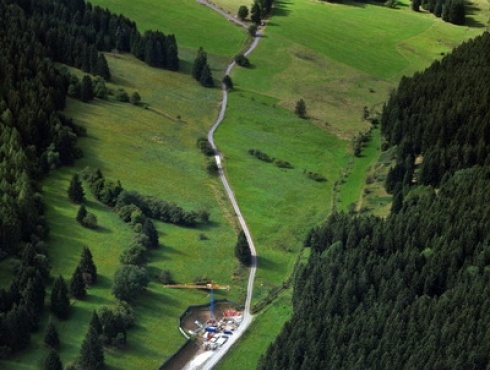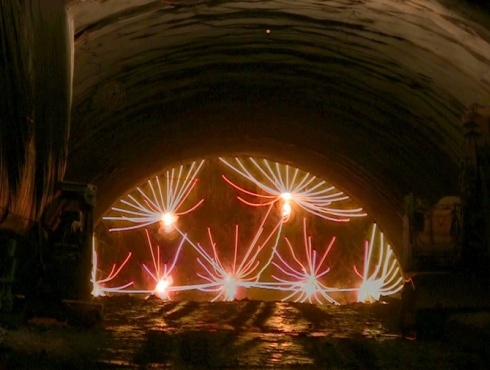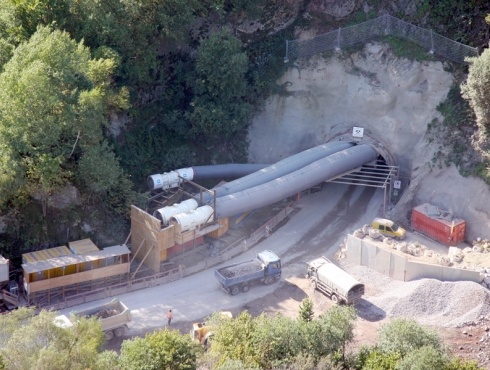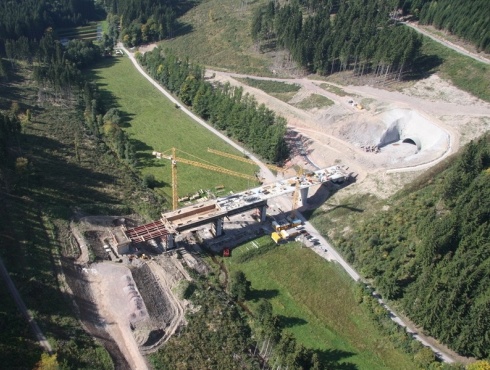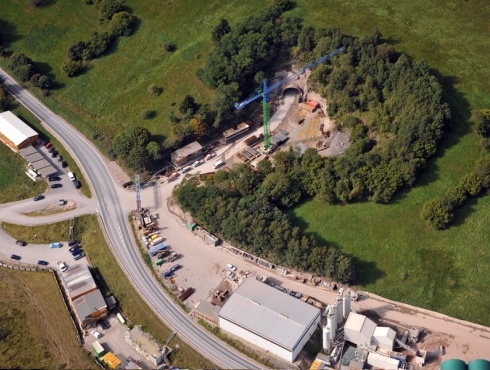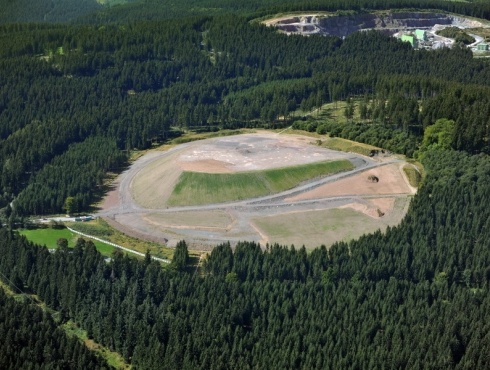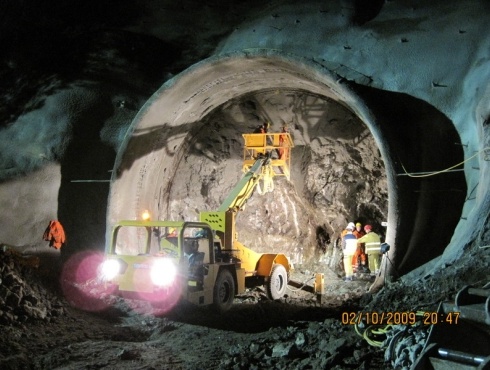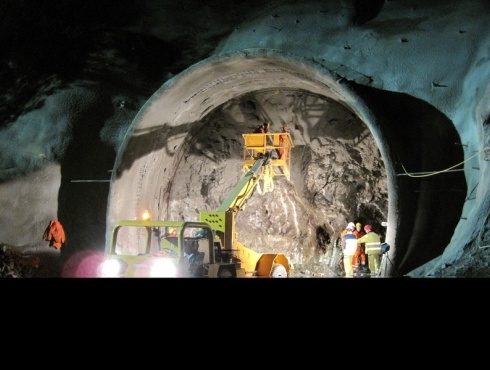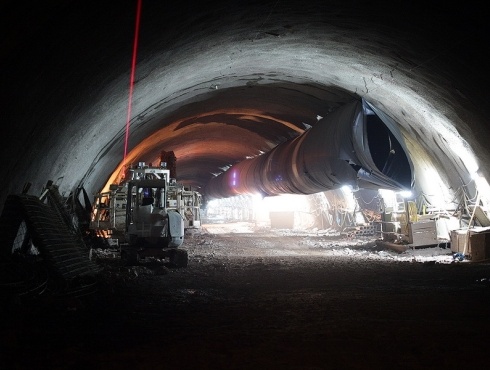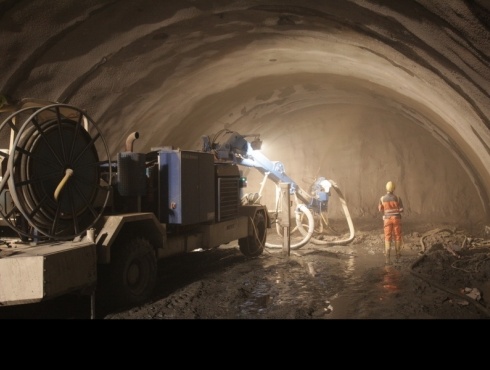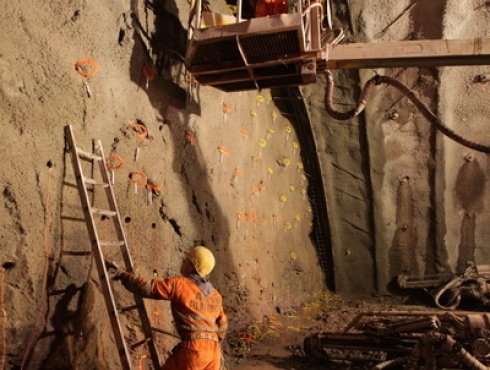Construction Project
New Railway Construction Ebensfeld-Erfurt - Tunnel Silberberg |
Location
- Großbreitenbach (Thuringian)
|
Client
|
Planning
- ILF Consulting Engineers and OBERMEYER Planen + Beraten GmbH, Munich
|
Investment volume
- approx. EUR 200.0 million
|
Construction time
|
Contracted services for BMG
- Section 55.8 HOAI-General construction supervision
- Construction management
- Contract management
|
Structures constructed
- Double track tunnel tube (L = 7,391 m) with a bore of 138 m2
- Clear height/clear width= 10.63/10.64 m
- Sloping and parallel gallery (L = 4,395 m) with a bore of 180 m2
- Maximum cover 130 m
- Total excavated tunnel material 1,500,000 m3
|
Construction method
- Excavation by means of blasting resp. excavator heading
|
Special features
- Safety concept by escape and rescue through the tunnel portals
- An additional 8 emergency exist for this purpose, which lead into the open via a system of emergency galleries, resp. a rescue shaft
- Continuous pipeline for extinguishing water in the whole tunnel
- Rescue places at the exits are linked to the transport system
|
Utilization
- Long-distance railway tunnel (design speed= 300 km/h)
|
Construction
- Full-circle mining of tunnel heading with graded heading face in accordance with the New Austrian Tunnelling Method (NATM)
- Tunnel support system by means of support arches, reinforcing steel mesh, anchors, stakes and shot-crete (d = 15-20 cm)
- Installation of a drainage to reduce ground and strata water pressure
- Sheets for waterproofing collect and direct the mountain water outside of the internal shell via sidewall drainage lines in a controlled manner
- Installation of a tunnel internal shell of water-proof concrete (d = 35-95 cm)
|
Geology
- In the southern sector, there are the Thuringian slate mountains made of clay silt slate and greywacke with intercalated siliceous shale, alum shale and volcanic rock veins
- In the northern sector there are mainly volcanic rock complexes of the Rotliegende
- The lower Rotliegende (red sediment) is made up of igneous rocks, tuffs, tuffites with sedimentary inclusions of clay, silt and sandstones as well as conglomerates
|

